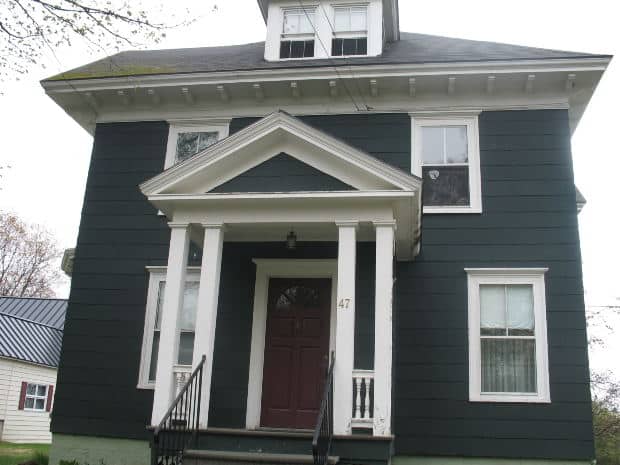10 Tips for Rebuilding Your Credit After Bankruptcy

Filing for bankruptcy can cause even the highest credit scores to plummet deep into the subprime lending zone. Whether you start in the high 700s or the low 600s, bankruptcy will most likely drop your credit rating well below 550.
Being in this “subprime” lending zone means that an individual will have difficulty obtaining loans – if they can obtain loans at all. After being turned away from traditional lenders, these individuals are often forced to take out loans at a high interest rate.
High interest rates can translate into tens of thousands of dollars worth of extra expenses over the life of some loans. They can also cause you to get back into similar financial struggles that caused you to file for bankruptcy in the first place.
This is why it is essential for individuals to begin to rebuild their credit immediately after filing for bankruptcy. Here are a few ways that show how to rebuild your credit score after bankruptcy and begin raising your credit rating.
Are you struggling financially? Contact our Las Vegas bankruptcy attorney today.
#1. Open a new checking and savings account
If you do not already have a checking and savings account, an essential first step to getting finances back on track is opening up a new checking and savings account. This will give you a fresh slate to work with and show financial institutions that you are committed to restoring financial stability.
In addition, having separate checking and savings accounts also makes it easier to start building your savings for big-ticket purchases since you no longer have credit cards.
#2. Keep tabs on your credit score and credit reports
While you can get your credit report for free once a year at annualcreditreport.com, it’s a good idea to check your credit score more often than once a year. Consider signing up for a site like Credit Karma, so you can check your credit as often as you would like for free. You can even keep tabs on how day-to-day activity affects your score.
#3. Reviewing your credit reports after Chapter 7 bankruptcy
You need to wait 90 to 120 days after your chapter 7 bankruptcy has been discharged by the court before requesting your free credit reports. Discharge can take up to six months after your bankruptcy attorney in Las Vegas filed. Then it can take another three to four months for your creditors to report your debt was discharged in bankruptcy.
When you obtain your free reports, verify each creditor says discharged in bankruptcy. If it says anything else, dispute the reason. All balances should be listed as zero. If there is a remaining balance, file a dispute.
Verify any debts that were not dischargeable – like federal student loans or ones you resigned, like an auto loan or mortgage – show that your payments are being made on time.
#4. Reviewing your credit report after Chapter 13 bankruptcy
A chapter 13 bankruptcy takes longer before it will be discharged. Initially, you will enter a repayment period that could last up to five years. You can request your free credit reports after waiting for three to four months after your initial filing and beginning your payments.
Your creditors may or may not report payments received from the trustee. However, you should verify that any debts excluded from the bankruptcy show on-time payments.
At the end of your repayment period, when any remaining balances are discharged, you should wait four months after you receive your discharge notice. All creditors included in your repayment plan should now have a zero balance, the account should be listed as closed, and it should say discharged in bankruptcy.
#5. Budget and pay bills on time
Most people notice they have more money after filing for bankruptcy. It is easy to be tempted to spend this extra money. However, you need to take the time to create a budget for the essentials and stick to it.
Sit down and figure out how much money you need to get by every month, and try to eliminate expenses that can be considered unnecessary or frivolous. Always pay bills on time, as missing payments can lead to derogatory marks on your credit report.
#6. Apply for a credit builder loan
A credit builder loan is a special loan that helps people with no credit or those looking to get a fresh start after their bankruptcies are discharged. This type of loan is often available from credit unions and local community banks.
Loan approval rates are exceptionally high as you only need to verify you have sufficient income to afford the monthly payments for the loan. Once approved, the loan is placed into a savings account and held by the lender.
As you make your monthly payments, your payment history is reported to the credit bureaus. After your loan is paid in full, the funds and any earned interest are transferred to you.
It is crucial to make your monthly payments on time every month. A single late payment will hurt any progress you are making at rebuilding your credit score.
#7. Apply for a secured credit card
Some banks offer special secured credit card credit builder programs. You open a savings account and deposit the amount of money you would like for your credit limit. You can increase your credit limit by depositing more money into the savings account.
You use your card up to your credit limit like a regular credit card. In addition, you make monthly payments just like a regular credit card.
The bank reports your payment history to the credit bureaus, so it is essential to make payments on time. If you default, the bank will close your credit card and take the amount owed out of the savings account.
However, if you continue to make on-time payments, the bank may convert your credit card to an unsecured card and give you access to the money in the savings account.
Getting a secured credit card may seem like a bad idea, considering you may have just pulled yourself out of a financial jam caused by credit card use. In reality, acquiring a low-limit secured credit card is one of the best ways to rebuild your credit score after bankruptcy and raise your credit rating.
On one hand, secured credit cards almost always have a small annual fee and sometimes require a deposit. On the other hand, however, they are easy to get with any credit rating, making them ideal for individuals with low scores.
#8. Get a retail or gas credit card

As your credit score improves, getting approved for a retail or gas credit card is much easier than a Visa or Mastercard. Both retail and gas credit cards help you turn necessary expenses into a way to build credit. If you find yourself filling up at the pump or visiting Walmart multiple times per month, why not use it to your advantage? Make sure to avoid getting charge cards from retail stores that are out of your price range or that will tempt you to go on a shopping spree.
#9. Ask to be added as an authorized user on someone’s credit card
Rebuilding your credit after bankruptcy can be improved much faster by being listed as an authorized user on someone else’s credit card. An authorized user is issued a card in their name and allowed to make purchases using the card.
Authorized users are not financially responsible for monthly payments. However, your credit score will reflect the primary user’s payment history and credit utilization. These are the top two FICO score ranking factors when determining credit scores.
Ideally, you should ask someone who makes their payments on time and is using less than 30 percent of their available credit limit. The longer they have had the account, the better, as it also boosts your credit score.
The primary user does not even have to give you the card. They could simply add you as an authorized user and keep the card, if they have concerns you may be easily tempted to use it. Even if you do not have the card, you still benefit from being listed as an authorized user.
#10. Avoid repeating past mistakes and making new ones
The primary purpose of filing for bankruptcy is to give you a fresh start financially. You do not want to blow this opportunity by falling back into the bad habits that led to bankruptcy.
Additionally, you need to remember you cannot refile for bankruptcy for at least eight years between Chapter 7 filings and at least four years for Chapter 13 filings. Furthermore, you need to be aware of common mistakes many people make when rebuilding their credit, including:
- Not paying attention to credit card fees and interest rates. There are some high-risk credit cards that come with expensive annual and monthly fees. The interest rate on these cards can be as high as 36 percent. While the thought of having a credit card can be tempting, these fees and high interest rates can quickly get you back into financial problems.
- Excessively applying for credit. Your credit score will suffer if you apply for too many credit accounts after your bankruptcy is discharged. Ideally, you should only apply for one or two credit accounts annually.
- Not keeping up on payments you reaffirmed during your bankruptcy. Your car loan and mortgage payments need to be paid on time. Continuing to make on-time payments for reaffirmed debts will help rebuild your credit.
- Getting a high-risk, high-interest-rate car loan. Another mistake to avoid is getting a car loan immediately after your bankruptcy is discharged. Unfortunately, if you need a car, you often end up having to select an older vehicle that is overpriced with a high interest rate. If you need a car, ask someone with good credit to co-sign so you can get a decent vehicle and a favorable interest rate.
- Not using your new credit lines responsibly. Whether you get a secured card or are added as an authorized user on someone’s credit card, it is vital to use your credit responsibly. For example, you could use the card to buy groceries or gas. However, as soon as the charge hits the card, pay it off immediately. This will keep the balance low and boost your credit score.
How long does it take to recover after bankruptcy?
How long it takes to recover after bankruptcy and rebuild your credit will take a lot of persistence and patience. After 12 to 24 months, most people should see an increase in their credit scores. However, this rate of improvement depends on what you are doing to rebuild your credit.
For example, if you consider applying for an unsecured credit card about six months after your bankruptcy was discharged, it can help raise your score even further and much faster. In addition, being added as an authorized user or obtaining a credit builder loan can also help.
However, you do need to remember your bankruptcy will remain on your credit report for up to ten years. The effects of the bankruptcy will gradually be offset as long as you are using your new credit responsibly. Once the bankruptcy falls off, you can see your score jump up as much as 60 points.
Most importantly, remember it will take some time before you see significant boosts in your credit score. Filing for bankruptcy and then regaining your financial footing afterward is a long and challenging journey.
For more excellent tips on regaining your financial freedom after bankruptcy, or for information about bankruptcy, you can visit Anthony Deluca‘s fiscal advice blog.
Get a fresh start financially by filing bankruptcy today

Most everyone has good intentions when managing their credit. However, life happens, and we can find we have lost our job, got injured, or made poor financial decisions. Should you find yourself struggling financially, and if you are in need of a bankruptcy attorney in Las Vegas to help make the process of filing as painless as possible, contact DeLuca & Associates today at (702) 935-4672.
Get a FREE consultation with Las Vegas bankruptcy attorney Anthony DeLuca or one of his experienced associates to decide if bankruptcy is right for you.
Sources:
About Bankruptcy.
Discharge in Bankruptcy – Bankruptcy Basics.
What Is the Function of the United States Trustee and Where Is It Located?. (2022).






